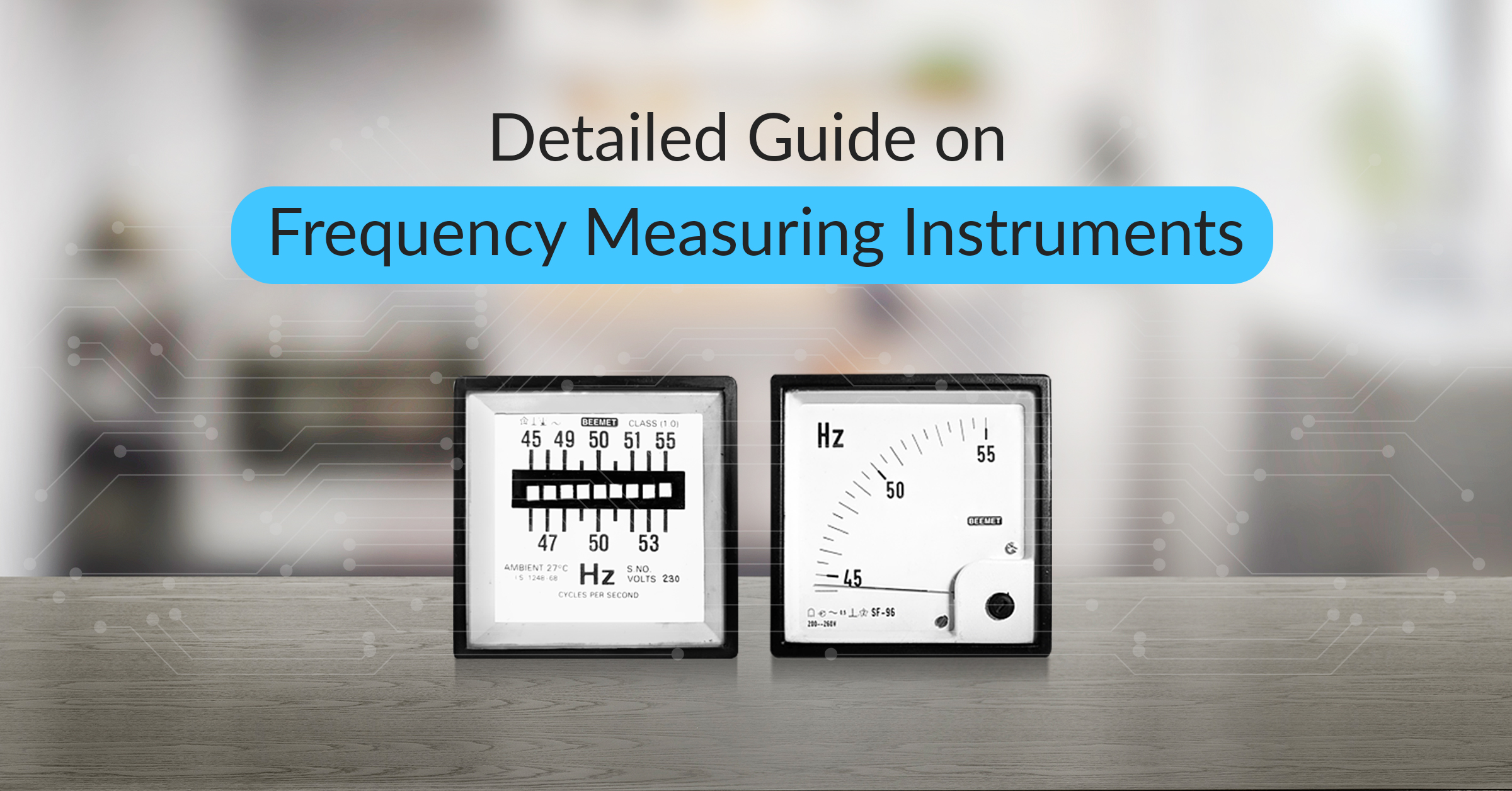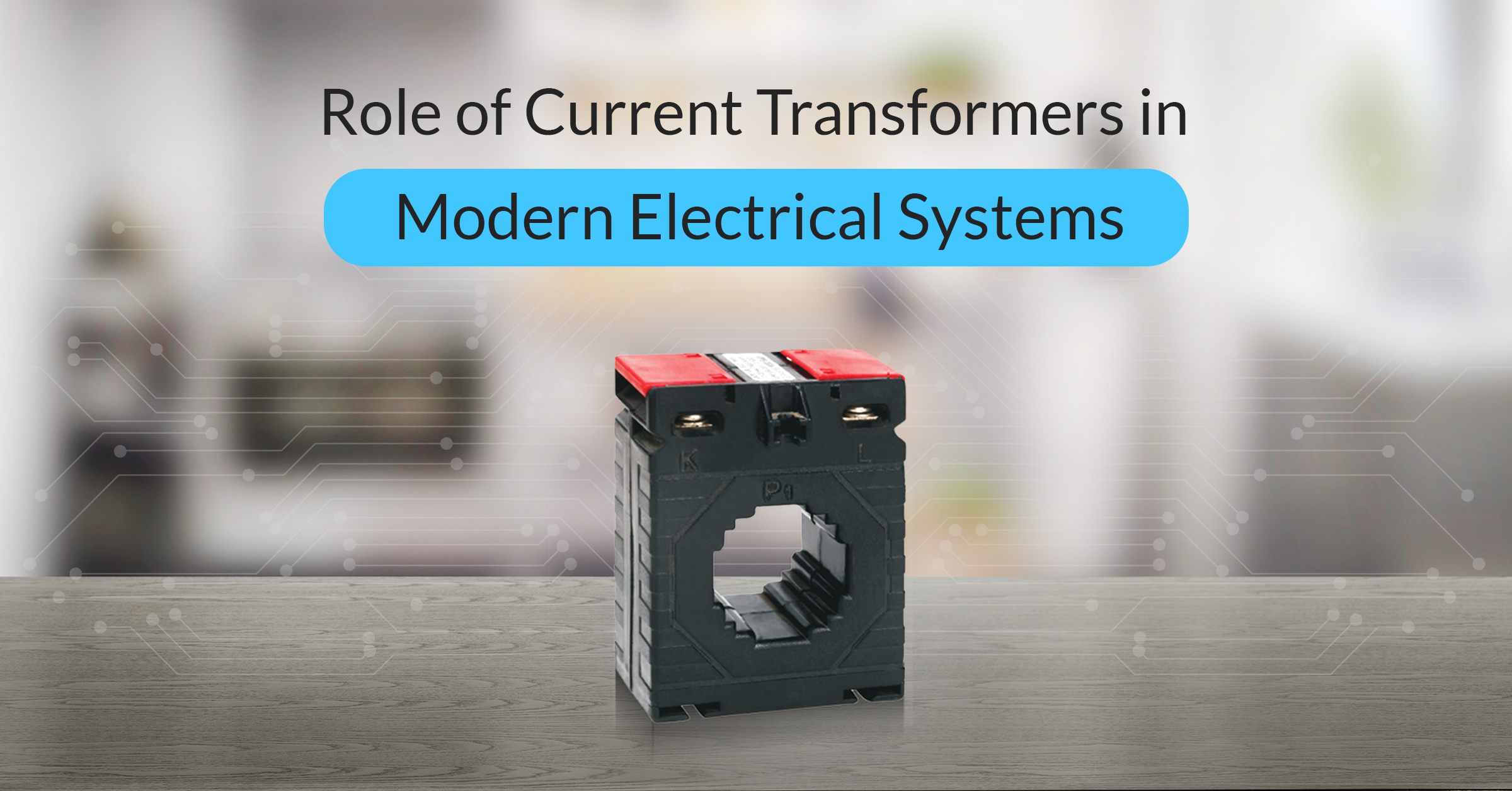What is Frequency Meter?
A frequency meter is the instrument by which frequency is measured in hertz (Hz), or the rate at which a recurring event happens. They are the indicating devices that measure the frequency of electrical energy. This electrical energy is usually created by different circuits as waves or signals.
Moving coil frequency meters operate based on differences in the electric current drawn by parallel connections between inductive and non-inductive circuits. Let’s find out more about frequency meters and their types.
Features of Frequency Measurement Tools
- They are more accurate compared to analog frequency meters and multimeters which minimize interpolation and reading errors. The ‘auto-polarity’ function helps to avoid problems from connecting the frequency measuring instrument to a circuit with the wrong polarity.
- Parallax errors get eliminated. If you view the pointer of an analog multimeter from a different angle, you might see a different value. It is a parallax error, and a digital multimeter’s numerical display resolves this problem.
- Digital frequency meters do not have moving parts. This makes them free from shock failures and wearing-out issues. The reading speed gets increased as it becomes easier to read. Unlike analog multimeters, there is no need for zero adjustment.
- Digital output is ideal for further recording or processing. Plus, it can be useful in a rapidly increasing range of computer-controlled applications. With the introduction of Integrated circuits, the power, size, and cost requirements of digital multimeters (DMMs) have been reduced drastically.
- Accuracy is increased thanks to the digital readout. You can make mistakes in reading the scale in analog multimeters, but digital frequency meters have LCD to show you accurate readings.
- You can use DMMs in testing continuity, transistors, capacitors, and diodes. More advanced digital multimeters can also determine the frequency.
- The ‘auto-ranging’ feature of a digital frequency meter lets you select different measurement ranges. Such an option can avoid damage to the meter due to the wrong selection of the range.
Types of Frequency Meter:
Now that you know the concept, you may be eager to know the different types of frequency meters. Although different versions can be found, three types of frequency meters are more popular than others. Examples include the moving iron frequency meter, the electrodynamic frequency meter, and the vibrating-reed frequency meter.
Moving Iron Frequency Meter
The meters have two fixed coils and a moving iron fastened to the spindle. The following is the operating concept of these meters.
Working Principle
This meter depends on changes in the electric current drawn by parallel circuits that are both inductive and non-inductive. The current from these circuits flows when the frequency changes in terms of value.
Construction
The magnetic axes of the two stationary coils, A and B, which make up this frequency measurement device, are perpendicular to one another. A long, soft iron needle is pegged at their centers. This circuit maintains its balance at the supply frequency that has to be measured.
Coil A contains a sequence of resistance Ra and reactance La in parallel. Coil B includes a series of resistance Rb and reactance Lb in parallel. The series inductance reduces waveform inaccuracies in the instrument indication by suppressing higher harmonics in the current waveform.
How Frequency is Measured With Moving Iron Frequency Meters?
When you make the frequency meter connection to the supply, coils A and B generate opposing torques while electricity passes through them. The current in coil A increases and it decreases in coil B in response to an increase in supply frequency. The iron needle is located closer to coil A’s magnetic axis. For low frequencies, coil A’s current reduces and coil B’s current increases.
Range
These meters measure very small amounts in addition to measuring massive levels of frequency.
Advantages
- They are robust.
- These meters are relatively cheaper than their counterparts.
- They include a scale tip of 3600.
- All coils in their case are fixed. The moving parts have no electrical connections.
Disadvantages
- They are not as accurate as the electrodynamic meter.
- They suffer from the errors induced by the eddy-current losses and the hysteresis.
Electrodynamic Frequency Meter
Moving coil frequency meters or electrodynamic frequency meters are ratiometer types of instruments. These meters are employed to determine the frequency of both excessively low and high voltage ranges. They offer accurate frequency readings and are made up of a rectifier circuit and two moving coils.
Construction
This frequency meter has two moving coils connected and positioned to each other at right angles on a shaft. Also, a pointer is attached to this shaft. The bridge rectifiers of these two moving coils are coupled. The bridge rectifier of the first moving coil, C1, which is coupled to the DC supply, is connected in series with a capacitor in this circuit. Direct current, also known as rectified current, travels to the bridge rectifier and the second coil C2 via a series resistance.
Range
These meters rely on a capacitor and resistance value. The ranges of these frequency meters are 40–60 Hz, 1200–2000 Hz, and 8000–12000 Hz. Now, let us see how frequency is measured with this device.
How Do Electrodynamic Frequency Meters Work?
When you connect the frequency to the supply, the rectified currents I1 and I2 pass through the moving coils C1 and C2. These coils’ torques become equal but point in different directions when they reach their rest positions.
Advantages
- The frequency scales on these meters are linear.
- Voltages do not affect the readings.
These frequency meters provide a large voltage range as well as a low voltage range of operation.
Disadvantages
The distortions that rectifiers produce lead to an incorrect frequency measurement.
These meters fall under the broader category of digital panel meters, which are widely used for accurate electrical measurements across industries.
Vibrating Reed Frequency Meter
It is an instrument used for frequency measurement of different electric circuits. It contains seven vibrating reeds. Each reed has a distinct value. These reeds vibrate when you connect the meter to the supply for frequency measurement. Each reed has variations in vibration. A reed with more vibration compared to other reeds is considered the frequency reading of an electric circuit or supply.
Construction
This frequency meter contains thin flat steel reeds positioned alongside and close to the electromagnet. A laminated armature and a winding coupled to a resistance in series make up the electromagnet. The AC supply, whose frequency has to be monitored and measured, stays connected to this winding. The metallic reeds are 0.5 mm thick and 4mm wide.
These metal reeds are placed in a row and have flexible bases that support the electromagnet’s armature. The color of these reeds is white. On a scale, these reeds remain grouped according to increasing frequency.
Range
The frequency readings on these vibrating reed metros range from 47 Hz to 53 Hz and 57 Hz to 63 Hz.
Vibrating Reed Frequency Meter Working Principle:
It is necessary to connect the meter to a supply to measure the circuit’s frequency. The supply that will be used for measuring frequency stays connected to the electromagnet. Every half cycle, the electromagnet applies an attracting force to every reed since its magnetism alternates at the same frequency.
Each reed begins to vibrate, but due to mechanical resonance, the reed with the double frequency vibrates at its highest amplitude. The vibration of other reeds is so small that they are unobservant.
Advantages
- Its indicators are not dependent.
- This frequency measurement device provides accurate readings.
- These meters are comparatively cheaper.
Disadvantages
- If there is a half-cycle discrepancy in frequency between the neighboring reeds, the reading is not being accurately observed.
- These devices aren’t accurate enough to give an exact scale reading.
Applications of Frequency Measuring Device
These measuring devices have an array of uses in different sectors. For example, many businesses use industrial frequency meters in radio frequency and microwave applications to tune transmitters and display rapidly changing frequencies.
Companies that use radio devices employ frequency meters to figure out the exact pitch of the instrument. Similarly, these devices have their uses in power applications to tune AC motors as well as other AC devices.
Conclusion
Frequency meters have become an integral part of our lives. From microwave devices to power applications, we have these useful measuring instruments for our betterment. If you are out in the market to buy a gadget featuring a frequency meter, check its power, abilities, and accuracy to make the best out of the item you choose.
If you want the best collection of panel meters, consider choosing BEEMET. We are the leading frequency meter, voltmeter, ammeter, current transformer manufacturer based in India with over a decade of expertise.
Want to explore more? Check out our A Complete Guide on Electrical Measuring Instruments.
FAQs
1. Who uses frequency measuring instruments?
Communication engineers and electrical engineering businesses wisely use these frequency measuring devices.
2. How to buy the right frequency meter?
Accurate frequency measurement is critical to maintain the performance of electrical systems. So, look for a device with high resolution and better accuracy to ensure precise readings. Additionally, check the warranty and ease of usage options.
3. What are the uses of a digital frequency metre?
A digital frequency metre is a general-purpose instrument that shows the frequency of an electrical signal to an accuracy of three decimal places. It counts the number of events occurring within the oscillations during a given time interval



